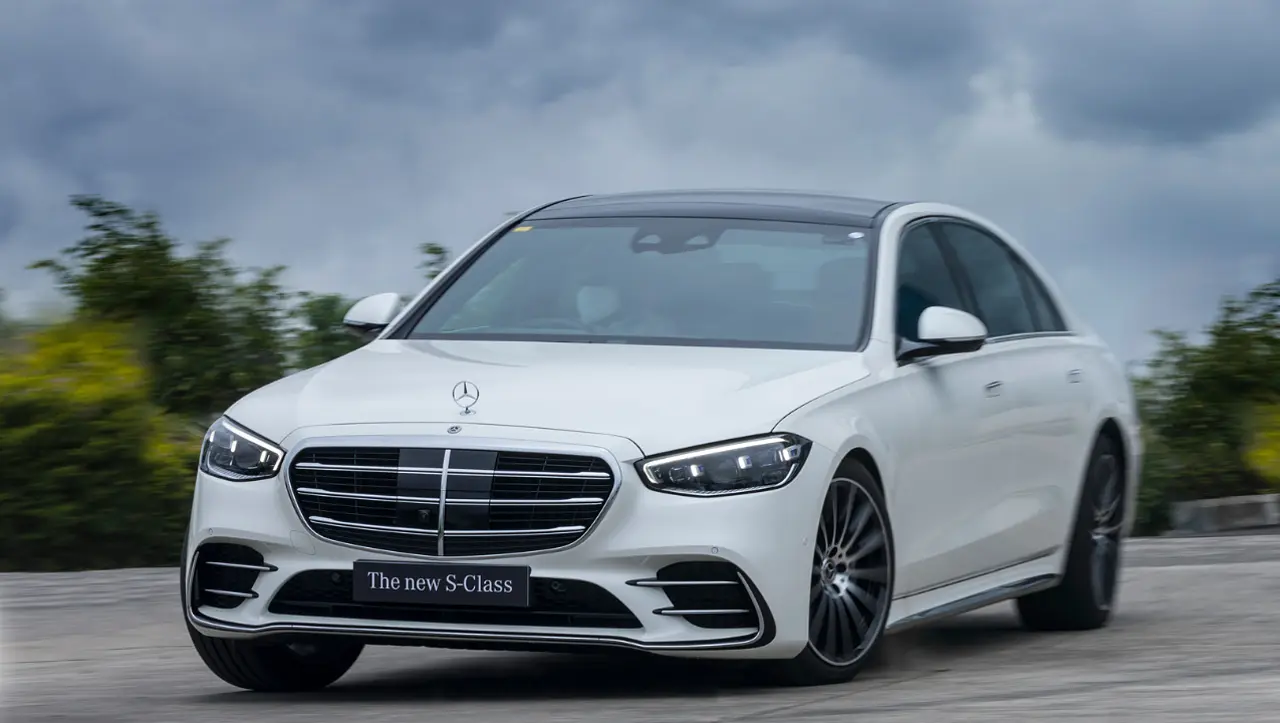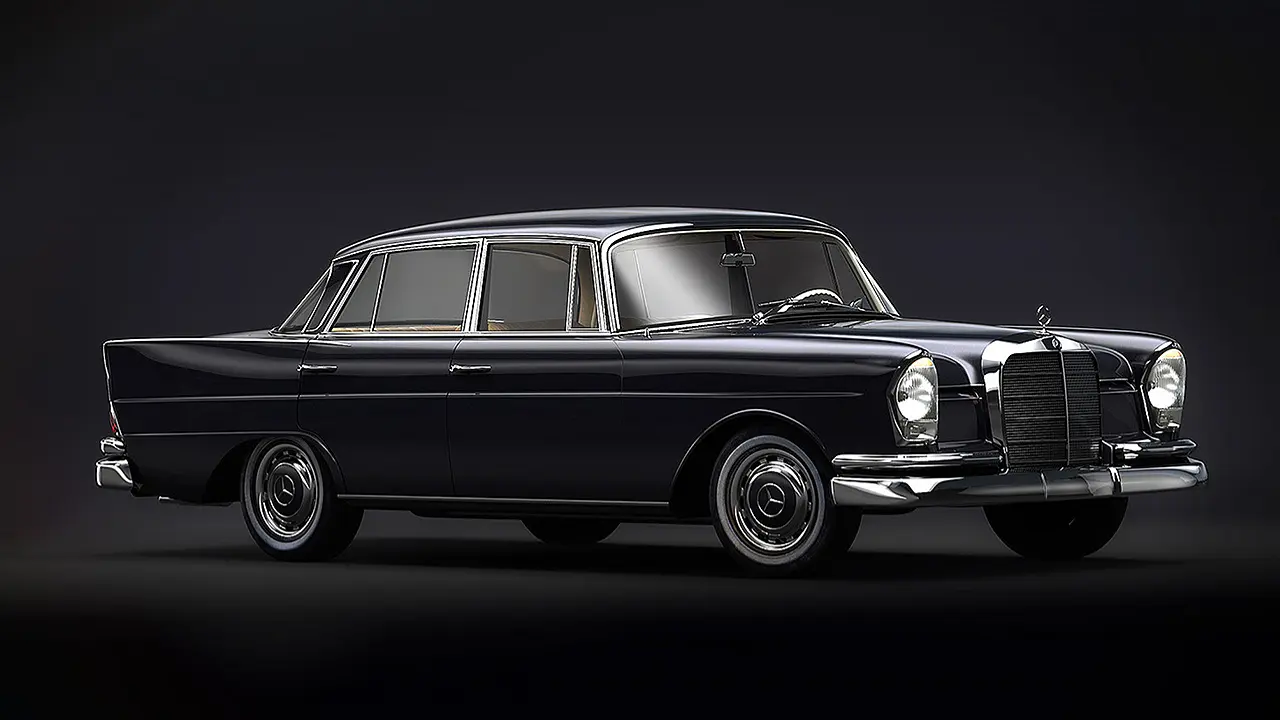
The oldest German manufacturer, Mercedes-Benz, just launched their flagship offering, S-Class, in India last week. With a price tag of INR 2.17 crore, it promises to give the customers the utmost comfort that they ever want. The interior comparison with a private jetliner is an old concept now. With an increased wheelbase by 51 mm, the new S-Class compares more to a presidential suite, if not less.
The flagship Mercedes has grown in terms of technological offerings too. For the first time ever, the S-Class comes with rear-axle steering as standard. This system allows the rear axle of the car to turn by about 4.5 degrees, helping the car reduce its turning circle at lower speeds, and at higher speeds, it improves the car's stability.
Apart from this, the S-Class has grown in terms of infotainment and entertainment prospect too. It now gets the second generation of MBUX with NTG7 featuring a fingerprint sensor. Moreover, with the vertical central OLED display with all-new graphics, the screen dimensions have grown by about 64%.
Although these features were an improvement over the existing counterpart, the S-Class still remains an innovator, when it comes to safety features. For example, with the W223 model series S-Class, Mercedes has introduced a 'frontal airbag' for rear-seat passengers.
Optional rear airbags that complement existing safety systems are used in conjunction with seat belts and other existing safety systems. In a severe frontal collision, the front seatbacks will trigger a new type of airbag to protect the passengers in the outer rear seats. The rear airbag can “significantly reduce the pressure on the head and neck of the outer rear passengers”, claims the company.
This is not the first time when Mercedes-Benz has introduced a new and innovative safety feature for the automotive industry. In fact, the S-Class has been known to be the innovator for major safety features in the industry.
This feature takes a trip down memory lane and looks at how the S-Class has changed the safety scenario of the industry over its 118 years of journey.

Mercedes-Benz 220 – 300 SE long
Also known as the 'Fintail,' the 200-300 SE long was first introduced in 1959. It was its rear design – the subtle fintails on the hind wings - that gave it the 'Fintail' name. These were officially known as 'aiming markers' due to their intended function as parking aids. However, the car's most notable feature regarding safety was its rigid passenger cell and crumple zone.
Béla Barényi, also known as the father of passive safety, was the man behind the invention of the crumple zone. In 1959, the 'Fintail' became the first model in which Mercedes-Benz incorporated front and rear crumple zones. In the event of an accident, these areas absorb energy and distribute impact in a predetermined manner, thereby significantly reducing the force acting on the occupants. This is a revolutionary invention in the automotive industry in terms of safety.
The 'Fintail' model also became the first car in the world to have a wedge-pin safety lock. In the older vehicles, doors were known to spring open even as a result of relatively harmless collisions, often resulting in occupants being thrown out of the vehicle since restraining or safety belts were not common at the time. The new locking mechanism featuring two safety detents prevented vehicle doors from bursting open or jamming shut in the event of an accident.
Mercedes-Benz S-Class ‒ 116 model series
In 1972, with the debut of the 116 series, Mercedes-Benz luxury sedans were given their own name: the S-Class. The new limousine was characterised, among other things, by a comprehensive safety concept that included a fuel tank installed above the rear; collision protection shaft that prevented the tank from catching fire in a rear-end collision.
During its fifth-year production run, the car featured an all-new safety system, which later became an industry standard. In December 1978, the 116 model series S-Class was the first car fitted with an ABS – anti-lock braking system. As a result, the car remained steerable even with maximum braking and the stopping distance on slippery surfaces was shortened. This system was jointly developed by Mercedes-Benz and Bosch.

Mercedes-Benz S-Class ‒ 126 model series
With the current-gen S-Class, the 223 model series, Mercedes-Benz invented the frontal airbag for rear-seat passengers. But did you know that Mercedes-Benz is also the inventor of airbags as we know it today?
Back in 1981, the 126 model series S-Class became the first car in the world to come with airbags as standard. Initially, it was offered with only a driver-side airbag, but from 1988, the model got an additional airbag for the front passenger too.
The airbag was jointly developed by the then Daimler-Benz AG and Bosch. By 1992, the driver's airbag became standard equipment in all of the brand's models, followed by a front passenger airbag as a standard safety feature in 1994.
Mercedes-Benz S-Class ‒ 220 model series
From here on, the journey of the modern S-Class had begun. It had already garnered the name and fame that it deserved. With its coupé-like appearance, the new S-Class was not only classic to look at; it was also relatively safe even by Mercedes-Benz standards. In 2002, the 'PRE SAFE' early occupant protection system was introduced, which prepares occupants for a possible impending collision by automatically initiating measures to ensure their optimal protection.
The most noticeable feature, however, was the proximity-controlled cruise control. It wasn't the first time a car had cruise control. Mitsubishi introduced the system in 1992. It was a LiDAR-based distance sensing system on the Japanese market called Debonair. Marketed as a 'distance warning,' this system warns the driver without affecting the accelerator, brakes or gear changes.
But Mercedes-Benz took up the concept and pushed it forward. With the 220 series, the brand introduced the radar cruise control that bears the name 'DISTRONIC adaptive cruise control.' This system uses a radar sensor to determine the free distance in front of the car and constantly adapts it to the driving speed.
The radar-based cruise control system was first introduced by Mercedes-Benz back in 1998 and later became an integral and an essential part of the functioning of the automobile industry.

The Mercedes-Benz S-class has always been known as the pioneer of automotive engineering. It has presented the automotive industry with a number of innovative features ranging from safety to dynamics. Sometimes these features were first of a kind, such as ABS or airbags. But sometimes, Mercedes-Benz took an existing feature and helped it improve to a larger extent, such as cruise control or the rear passenger frontal airbags.
Round-up
The journey of the Mercedes-Benz S-Class did not begin with the 220 (W 187) in 1951, but instead goes back to the origins of the Mercedes brand in the early 20th century, when the OEM introduced the Mercedes Simplex 60 hp in 1903.
The Mercedes-Benz S-Class has a long and rich tradition. Each model has shaped the automotive developments of its time. The reputation of the Mercedes-Benz brand for offering high-end vehicles with an emphasis on luxury, comfort and safety was firmly anchored long before the S-Class got its official name, and continues after almost 120 years.
(Source: Mercedes-Benz, Daimler)